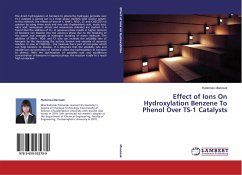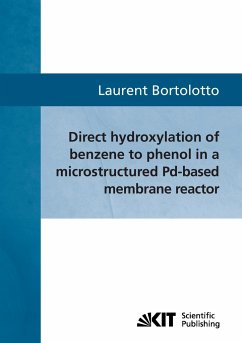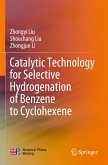The direct hydroxylation of benzene to phenol by hydrogen peroxide over TS-1 catalysts is carried out in a three phase stainless steel reactor system. In this research, the effects of ions (H+, NH4+, NO3-, Cl- and CH3COO-) in solution by using three acids and two salts (hydrochloric acid, acetic acid, nitric acid, ammonium nitrate and ammonium chloride) are studied. It is found that the addition of H+ in aqueous phase results in higher amount of benzene can dissolve into the aqueous phase due to the breaking of the extent and strength of hydrogen bonding of water molecule. The addition of NH4+, NO3- and Cl- ions can increase the solubility rate of benzene by the decreasing the surface tension and viscosity of aqueous solution. In case of CH3COO- , the molecule has a part of non-polar which can help benzene to dissolve. It is observed that the solubility rate and equilibrium concentration of benzene affect the hydroxylation of benzene to phenol. With the optimization of solubilityrate and equilibrium concentration of benzene in aqueous phase, the reaction is able to a reach high conversion.
Bitte wählen Sie Ihr Anliegen aus.
Rechnungen
Retourenschein anfordern
Bestellstatus
Storno








